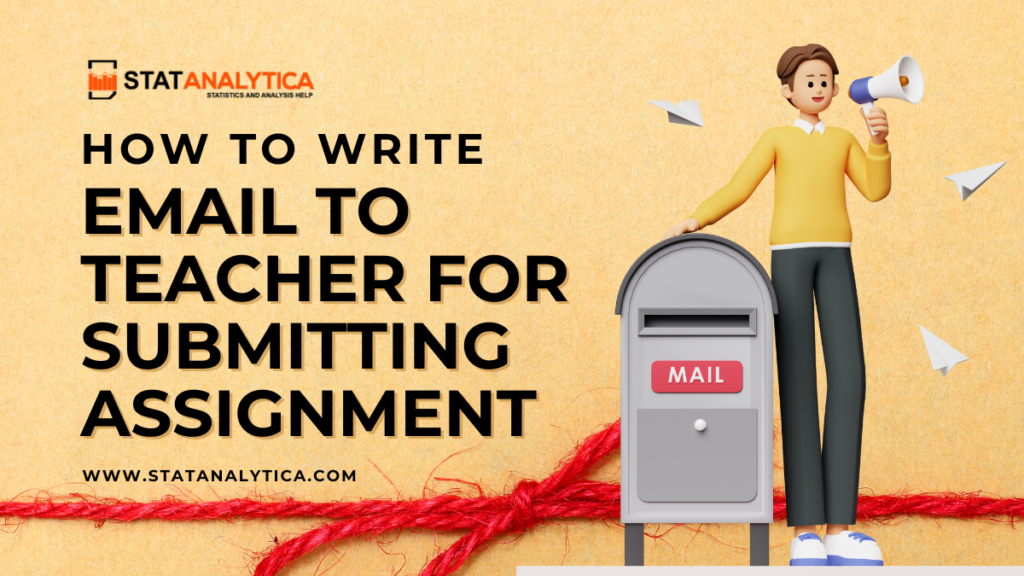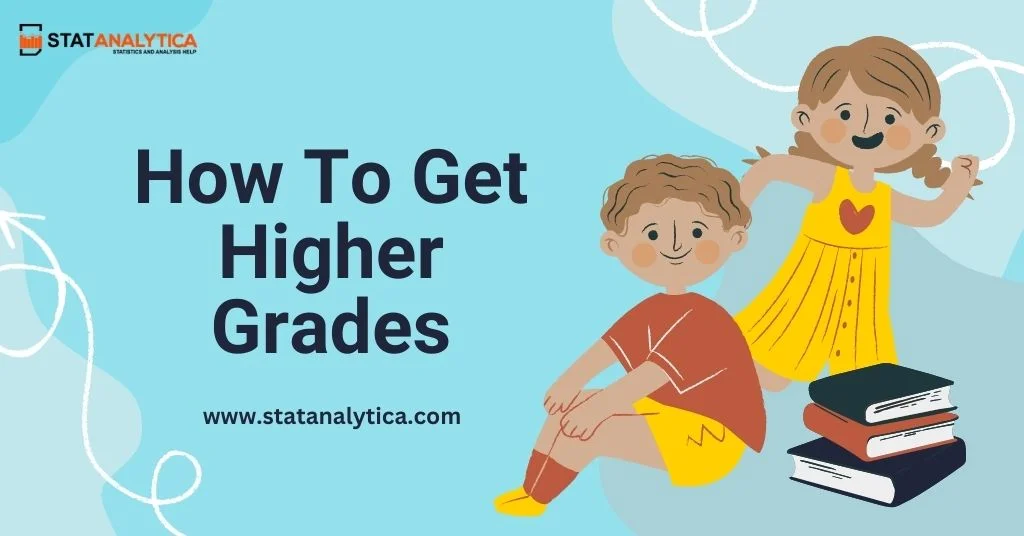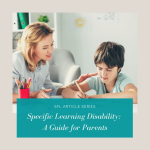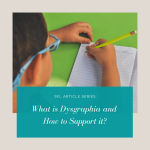

How to write email to teacher for submit assignment?
Table of content.
In today’s digital age, submitting assignments via email has become a common practice. However, not all students find this transition easy. I recently emphasized to my students the importance of sending their assignments via email. Despite my efforts to hammer home this point, they weren’t flexible at all and insisted on submitting their assignments in their preferred form, which was written on paper.
This experience highlighted the need for clear communication and understanding of how to properly write an email to a teacher for submitting assignments. We will go through some tips to help you craft a professional and effective email.
Preparing Your Assignment for Submission
Follow these steps to make sure your assignment is well-prepared and ready for submission via email. It guarantees good communication with your teacher or professor. Also, it ensures that your hard work is received and reviewed without a problem. Here are the steps.
Ensuring Your Assignment Meets All Requirements
Before attaching your assignment to the email, make sure it meets all the requirements set by the professor.
Double-check the guidelines including formatting, the word count, or any specific content. I always remind my students to go through the assignment criteria to ensure they haven’t missed any important details.
Choosing the Right File Format
It’s really important to choose an appropriate file format as it makes the submission process easy and smooth. Most professors and teachers prefer assignments in PDF or DOCX as they are widely used, and it’s easy to open them. I ask my students to save their assignments as PDF to avoid formatting problems when opening the file on another device.
Naming Your File for Easy Identification
Your professor can spot the file easily if its name is clear and descriptive. Include your name, course name, and a proper title in the file name. Not only does it make it easier for the teacher to find the file, but it also shows you pay attention to every single detail. For example, “Tom_Egerton_Chemistry_Assignment.pdf” .
I emphasized this point to my students as a good name for the file can make a good difference in how your submission is received.
Crafting Your Email: A Step-by-Step Approach
You should remember to always pay attention to all parts of your email, especially when it comes to emails to professors, which are delicate as they make up your grades. Let’s take a look at A to Z of writing a compelling email.
Writing an Effective Subject Line
The first and most important part of your email to professors is the subject line. Just as I emphasized to my students, make sure your subject line includes the purpose of your email . For example, “Assignment Submission: Physics 102- Tina Miller” helps your teacher quickly understand the purpose of your email.
Structuring Your Email Body
You should now start the most important part of your email, the body. It's the scaffolding of your email as it carries your purpose and needs. Here is what you should include in the body of the email.
Opening with a Professional Greeting
Start with a respectful greeting, like, “Dear Dr. Grahams,” . This shows you respect and appreciate their time and effort. Don’t you think a polite greeting adds a positive tone to the rest of the communication through email?
Clearly Stating the Purpose of Your Email
Go straight to the point and don’t talk about unnecessary stuff. For example, “I am submitting my assignment for Chemistry 101, titled Understanding Acids and Bases.” So, the professor or teacher doesn’t get confused about which assignment you’re referring to. I always get my students to pay attention to the importance of clarity to prevent misunderstandings.
Providing Essential Assignment Details
You should make things concise and straightforward. Also, include the necessary information. I always get my students to pay attention to these elements to avoid confusion and misunderstanding.
· Assignment Name and Course Information: Go ahead with the title of your assignment and the course name. Then the teacher understands what you’re talking about. For example, “Subject: Submission for Chemistry Project 101”
· Due Date and Submission Date: Tell your teacher when the assignment was originally due and the date you’re actually submitting it. This is especially important when the assignment is handed out late. For example, “The assignment was due on August 24 th and I’m submitting it on July 27 th .”
· Quick Overview of the Assignment: Briefly explain what your assignment covers. Mention the main topic and any specific instructions you followed. For example, "This project looks at how acids affect bases and how salt is produced."
· Attached Files and Format: Let your teacher know you've attached the assignment file and mention the format. For example, "I've attached the project as a PDF."
· Extra Details: If there's anything else your teacher needs to know, include it here. For example, "Please note that I've added a section with additional resources at the end of the document, as requested."
Closing Your Email Professionally
Now, it’s time to wrap up your email to your teacher. It's important to be clear, polite, and professional to make a positive impression and clear communication. Here's how to do it:
1. Say Thanks: Start by thanking your teacher. For example, "Thank you so much for your time and help."
2. Recap Key Points: Briefly mention what you've attached and what you expect. For example, "I've attached my project for Chemistry 101 and look forward to your feedback."
3. Sign Off: Use a professional closing like "Kind regards," , “Thank you,” , "Sincerely," or "Best regards,"
4. Contact Info: Include your contact details in your email signature or within your email. For example, "You can contact me at [your email address] or [your phone number]."
Attaching and Sending Your Assignment
Students simply forget to attach files, which leads to unnecessary follow-up emails. This is a common issue I have to remind my students about. Let’s see what we should do in order to make sure we have sent all the necessary files.
How to Properly Attach Files to Your Email
Don’t forget to attach your assignment to your email. Plus, take these steps:
1. Check the File Size: Make sure your file isn't too large.
2. Use Common Formats: Use file formats that are easy to open, like PDF, DOCX, or JPEG.
3. Attach the File: Click the "Attach Files" button, find your file, and select it. Make sure it's fully uploaded before sending.
4. Mention the Attachment: In your email, mention that you've attached a file. For example, "I've attached my project for Chemistry 101 as a PDF."
Double-Checking Before Hitting Send
Before clicking on the send button, double-check you have attached the correct file and that it’s the right version.
Also, go through your email and pay attention to grammar and spelling. This step is significant as you can make sure you have written an effective email, which is error-free.
Confirming Receipt: When and How to Follow Up
After you send your assignment, it's a good idea to make sure your teacher receives it. Here's how to do it:
1. Wait a Bit: Give your teacher some time to respond. It’s a good idea to wait at least one or two days.
2. Send a Polite Follow-Up: If you haven't heard back, send a short, polite email.
3. Be Patient and Respectful: Remember, teachers are busy. Be patient and respectful when you follow up.
By doing these, you can make sure your assignment was received. Also, if there’s a problem, you can handle it pretty easily.
Common Mistakes to Avoid When Submitting Assignments via Email
When you send your assignments, avoid these common mistakes:
1. Forgetting Attachments: Always double-check that you've attached your file before sending.
2. Wrong File Format: Use common formats, so your teacher can easily open the file.
3. Unclear Subject Line: Use a clear subject line.
4. Vague File Names: The file name should be clear, so your teacher understands what’s in it.
5. Unprofessional Tone: Keep your email professional with proper greetings and polite language.
6. Not Mentioning the Attachment: Always mention in your email that you've attached a file.
7. Late Submissions Without Explanation: If you're late, explain why and apologize.
By avoiding these mistakes, you can make sure your assignment submission is smooth and professional.
Technical Errors That Can Derail Your Submission
I always ask my students to pay attention to these common technical errors to make sure the submission goes perfectly:
1. Large Files: Compress your file or send it through services such as ‘Google Drive’.
2. Wrong Format: Use common formats like PDF or DOCX.
3. Broken Links: Ensure shared links work.
4. Email Issues: Check that your email was sent and received.
5. Corrupted Files: Make sure your file opens correctly before sending.
Etiquette Missteps That Leave a Poor Impression
Don’t forget to consider these factors to make a positive impression:
· Have a Clear Subject Line.
· Introduce Yourself.
· Include Your Purpose.
· Include Details.
· Be Respectful.
· Ask for More Help Politely.
· Thank Your Teacher.
· Sign Off Politely.
Special Scenarios in Assignment Submission
My students have different requests in their emails about assignments. Let’s take a look at the most common things they want from teachers and professors.
Requesting a Deadline Extension
At times, my students email me to ask for an extension. They haven’t completed the task before due time and ask, “Could I please have a few extra days to complete the assignment due to some unexpected circumstances?”
You shouldn’t sound demanding. Ask it very politely. Don’t ask for this now and then!
Submitting a Group Project
There comes a time when we should submit a group project. To do so, we should pay attention to these elements:
1. Subject Line: In your subject line, include that it’s a group project. For example, “Group Project Submission- Chemistry 103- Acids and Bases”
2. Introduction: Introduce the project briefly and write the group members’ names. You can also include all members’ emails in the CC field. Plus, in this way, you keep them informed.
3. Purpose: Say that you’re submitting a group project.
4. Attachments: Name the attached files clearly.
5. Closing: Thank the teacher and sign off with your names.
Sample Email Templates for Assignment Submission
You have learned how to write an email to your teacher about submitting assignments. But the point is you might want to take a look at some templates to have a better understanding. Here are some emails to professor examples. You can also use Remail to craft perfect emails for effective communication without any mistakes.
Template for Standard Assignment Submission
Subject: Assignment Submission: Chemistry 101 – Acids and Bases
Dear Professor Campbell,
I hope you’re doing well. I've attached my project for Chemistry 101- Acids and Bases and eagerly wait for your feedback. If there are any problems with the file or if you need more information, please let me know.
Thank you for your time and consideration.
Best regards,
Tom Egerton
[Your Contact Information]
Template for Late Submission with Explanation
Subject: Late Submission: Chemistry 101 – Acids and Bases
Dear Professor Graham,
I hope you're doing well. I am writing to submit my assignment for Chemistry 101- Acids and Bases, later than the deadline. You can find the attachment. I’m so sorry for the delay.
The reason for the late submission is I had a cold and couldn’t complete the assignment on time. I know deadlines are important, and this was a special situation.
Thank you for understanding. Let me know if there are any problems with the file or if you need more information.
Nancy White
Template for Submitting a Revised Assignment
Subject: Revised Assignment Submission: Chemistry 101 – Acids and Bases
Dear Professor Collins,
I hope you're doing well. I've included the updated version of my assignment for Chemistry 101- Acids and Bases. I've updated the assignment according to your suggestions.
Let me know if there are any problems with the file or if you need more information.
Thank you for your time and help.
Sam Peterson
In short, it's important to know how to submit assignments by email. Follow these tips to make sure your assignments are clear and simple. Good communication and paying attention to details can really help.
You can also use tools like Remail to compose extraordinary emails without mistakes.
Unleash your true potential Get Remail Now!


25 Professional Teacher Email Examples
Examples of emails to a school teacher
Teacher Emails are necessary, sometimes. Whether it is to clarify a doubt or to ask for an extension on an assignment, sending an email to a teacher has become a common practice among students and parents. If you are not sure how to address a teacher or how to clearly state the purpose of your email, keep reading.
In this blog post, we will provide you with some examples of emails to a teacher on various topics such as school homework, sick note, a child’s progress, bullying, reporting an incident, or even a late assignment. You can modify these templates to create a personalized professional and effective email.
1. Example teacher email about homework
Dear [Teacher’s Name],
I hope this message finds you well. I had a quick question regarding the homework assigned in class yesterday. I wasn’t quite clear on the instructions for problem #3 and was hoping you could provide a bit more clarity on what is expected.
Thank you for your time and guidance.
Best regards, [Your Name]
2. Example email to a teacher about a late assignment
I apologize for submitting my assignment late. Unfortunately, unforeseen circumstances arose that prevented me from completing it on time. I understand the importance of timely submissions and take full responsibility for my actions. If possible, I would appreciate any guidance or feedback you can provide to help me improve future assignments.
Thank you for your understanding.
Sincerely, [Your Name]
3. Example email to a teacher about a technical issue submitting homework
I trust this email finds you well. I wanted to bring to your attention that I am experiencing some technical difficulties submitting my homework through the online platform. Every time I try to upload the file, I receive an error message and the upload fails.
I have tried different browsers and devices, but the issue persists. Is there any alternative way I can submit my homework? I apologize for any inconvenience this may cause.
4. Example email to a teacher about being absent due to illness
I hope this email finds you well. I wanted to let you know that I won’t be able to attend the class today due to illness. I am experiencing [symptoms] and my doctor advised me to rest at home to avoid spreading any potential sickness.
I will do my best to catch up on the missed classwork and assignments as soon as possible. Please let me know if there is any specific material or tasks that I should prioritize.
Thank you for your understanding and I apologize for any inconvenience this may cause.
5. Example email to a teacher about access to the class website
I hope you are doing well. I wanted to reach out because I am having trouble accessing the class website. I have tried logging in using my username and password multiple times, but I keep receiving an error message.
I was wondering if there is anything I can do to troubleshoot this issue, or if there is someone I can contact for further assistance. I don’t want to miss any important updates or assignments, so any help would be greatly appreciated.
Thank you for your time and I look forward to hearing back from you soon.
6. Example email to a teacher about missing class
I hope this email finds you well. I wanted to let you know that I was unable to attend class [insert date] due to [provide a reason for absence]. I apologize for any inconvenience this may have caused, and I would greatly appreciate it if you could let me know what I missed during that class so I can catch up on the material.
7. Example email to a teacher about bullying
I am writing to you about an issue that has been troubling me for some time now. I have noticed that there has been a lot of bullying going on in our class lately and it’s beginning to make me feel uncomfortable and unsafe.
I believe that everyone deserves to feel respected and valued, and I think it’s important that we work together to create a safe and supportive environment for all students. I would like to request that you take action to address this issue and ensure that all students are held accountable for their actions.
Thank you for your attention to this matter.
Sincerely,[Your Name]
8. Example email to a teacher about child’s absence
I am writing to inform you that my child, [Child’s Name], was unable to attend school yesterday [Date] due to [Reason for Absence]. I apologize for any inconvenience this may have caused and would like to request any missed assignments or classwork that needs to be completed.
Thank you for your understanding and please let me know if there are any further steps I need to take to ensure that my child stays up to date with their studies.
9. Example email to a teacher about grades
I hope this email finds you well. I was wondering if there is a chance to discuss my grades. I am eager to know where I stand and how I can improve my academic performance going forward.
Thank you for your time and consideration.
10. Example email to teacher about homework grade
I hope this email finds you well. I was hoping you could provide me with some feedback on my recent homework assignment. I received a lower grade than I was expecting and I was hoping to get some insight into what I could improve on for future assignments.
Thank you for your time and I look forward to hearing from you.
11. Example email to teacher about a late assignment
I hope this email finds you well. I am writing to apologize for submitting my assignment late. Unfortunately, I encountered some unforeseen circumstances that prevented me from completing it on time.
I understand that late submissions may have consequences, and I am willing to accept any penalties that may be assigned. I would also appreciate any feedback or suggestions you may have.
Thank you for your understanding, and please let me know if there are any further steps I need to take to rectify the situation.
12. Email to teacher from parent about their child’s behaviour
I wanted to touch base with you regarding my child’s behaviour in class. I have noticed some changes at home and I wanted to see if anything has been happening at school that could be contributing to this.
Can we schedule a time to chat about this further and discuss ways that we can work together to address any concerns?
Thank you for your time and attention to this matter.
13. Email to teacher about an incident in class
I wanted to bring to your attention an incident that occurred during class yesterday. [Describe the incident briefly and objectively].
I believe it’s important to address situations like this to ensure a safe and respectful learning environment for all students. Thank you for your attention to this matter.
14. Email from parent to the teacher about child being bullied
I am writing to you to express my concern about my child, [Child’s Name], who has been bullied by some of their classmates. It’s been affecting their mood and behaviour lately, and I would appreciate your help in addressing this issue.
I would like to request a meeting with you to discuss this matter further and find ways to prevent it from happening again. I believe that with your assistance, we can create a safe and inclusive environment for all students.
15. Email to teacher about child’s grades
I hope this email finds you well. I wanted to touch base with you regarding my child’s grades in your class. I have noticed that their grades have been slipping a bit and I wanted to ask if there is anything we can do to help improve their performance.
I know that my child is capable of doing well and I want to make sure that they have all the resources and support they need to succeed. Please let me know if there is anything we can do at home to reinforce the material or if there are any additional resources you can recommend.
Thank you for your time and attention in this matter.
Best regards,
[Your Name]
16. Email to teacher about child’s progress
I hope this email finds you well. I wanted to touch base regarding my child’s progress in your class. As a parent, I am eager to support my child’s education and would appreciate any insights you can offer on their academic and social development.
Could you please provide an update on how my child is doing in your class? Are there any areas where they excel or struggle? How can I best support their learning at home?
Thank you for all that you do to support my child’s education. I look forward to hearing back from you.
17. Email to teacher about child being sick
Subject: Child’s Absence Due to Illness
I wanted to inform you that my child [Child’s Name] was absent from school today due to illness. They have been experiencing [symptoms] and I believe they should stay at home and rest.
Please let me know if there is any work my child may have missed or any assignments that need to be completed.
18. Email to teacher about a child needing extra support
I hope this email finds you well. I wanted to reach out to discuss some concerns I have about my child’s progress in the class. My child has been struggling with [specific area(s) of difficulty] and I was wondering if there are any extra resources or support available to help them succeed.
I know my child is capable of doing well, but they may need some additional assistance. I would greatly appreciate any advice or guidance on how we can work together to ensure their success.
19. Email to teacher asking for something
I hope this email finds you well. I am writing to kindly request [insert what you are asking for]. I believe this will greatly benefit my learning experience in your class.
Thank you for your time and consideration. Please let me know if you need any additional information from me.
20. Example email to teacher about failing grades
I hope this email finds you well. I wanted to reach out to you regarding my recent grades in your class. I have noticed that my grades have been consistently low, and I am concerned about my performance in the class.
I wanted to ask if there are any additional resources or study materials that you would recommend to help me improve my understanding of the material. I am willing to put in extra effort and time to ensure that I can succeed in your class.
21. Example email to teacher about failing grades version 2
I hope this email finds you well. I wanted to reach out to you regarding my recent grades in your class. I have noticed that I am struggling and unfortunately, my recent grades reflect that. I am disappointed in myself and I know that this is not a reflection of my abilities.
I wanted to ask if there is anything I can do to improve my performance in the class. I am willing to put in extra effort and seek additional help if necessary. I am also open to any feedback you may have to offer.
23. Email to teacher about a sick child
I am writing to let you know that my child [Child’s Name] is currently sick and will not be able to attend school for the next few days. As soon as my child is feeling better, they will return to class.
I appreciate your understanding.
24. Email to teacher from parent about new student joining
I hope this email finds you well. I wanted to inform you that my child’s friend [New Student’s Name] will be joining your class starting tomorrow. They have recently moved to the area and will be attending [School Name] from now on.
I wanted to reach out and provide any necessary information you might need about [New Student’s Name]. They are a diligent student who enjoys math and science. They are also very involved in sports and love to play soccer.
Please let me know if there is anything else you need from me or if there are any adjustments that need to be made to accommodate the new student. We are looking forward to an exciting school year.
Thank you for your attention.
Best regards, [Parent’s Name]
Explore more Simplestic Email Templates
- Positive Email to Parents from Teacher: 15 Example Emails
- Missing Assignment Email to Teacher: 25 Example Emails
Most Viewed

2 Weeks Notice Email Sample Templates

After Interview Email Sample | 15 Templates

177 Example Email Titles for Various Scenarios

How to Express Disappointment in a Professional Way
How To Write an Email For Assignment Submission
In this article, you will learn how to write a professional email for assignment submission. The email format provided will help you effectively communicate with your professor or supervisor while submitting your assignment.
Writing a clear and concise email is crucial in conveying your message and ensuring that your assignment is submitted successfully.
Table of Contents
What To Do Before Writing the Email
Before writing the email, there are a few actions and considerations you should keep in mind:
- Review the assignment guidelines and requirements thoroughly.
- Check the submission deadline and make sure you have enough time to complete and submit the assignment.
- Collect any additional materials or documents that need to be submitted along with your assignment.
- Organize your assignment files in a clear and logical manner.
- Double-check the email address or platform where you need to submit your assignment.
What to Include In the Email
When writing the email for assignment submission, include the following parts:
1. Subject Line
The subject line should clearly state the purpose of your email. For example, “Assignment Submission – [Course Name/Number]”. This helps your recipient quickly understand the nature of your email.
2. Greeting
Start the email with a polite and professional greeting, such as “Dear Professor [Last Name]” or “Hello [Supervisor’s Name]”.
3. Introduction
In the introduction, mention your name, your course (if applicable), and the assignment you are submitting.
4. Assignment Details
Provide a brief summary of the assignment, including its title and any relevant details mentioned in the guidelines.
5. Attachments
Mention the attachments you are including with the email, such as the assignment document, supplementary materials, or any required forms. Make sure to double-check that you have attached the correct files.
6. Submission Confirmation
Request a confirmation from the recipient acknowledging the successful receipt of your assignment. This helps to ensure that there are no misunderstandings regarding its submission.
End the email with a polite closing, such as “Thank you” or “Best regards,” followed by your full name and contact information (if necessary).
Email Template – Assignment Submission
Subject Line: Assignment Submission – [Course Name/Number] Dear Professor [Last Name], I hope this email finds you well. My name is [Your Name], and I am writing to submit my assignment for the [Course Name/Number]. The assignment I am submitting is titled [Assignment Title], which was due on [Submission Deadline]. I have attached the completed assignment document along with this email. Additionally, I have included the supplementary research materials as requested in the assignment guidelines. Please confirm the successful receipt of my assignment. If there are any issues or additional information required, please let me know as soon as possible. Thank you for your time and consideration. Best regards, [Your Full Name] [Contact Information (optional)]
Writing a well-structured email for assignment submission is essential to ensure that your work reaches the intended recipient accurately. By following the steps outlined above and using the provided email template, you can effectively communicate your submission while maintaining professionalism.
Remember to always review your email for any errors or missing information before sending it. Good luck with your assignment submission!
- Be polite and professional in your email communication.
- Double-check all attachments before submitting the email.
- Follow any specific instructions or guidelines provided by your professor or supervisor.
- Ensure your email is clear, concise, and free from grammatical errors.
- Keep a copy of the sent email and any confirmation received for future reference.
How To Write Email To Teacher For Submitting Assignment ?

You’ll learn how to structure your email, what to include, and how to ask questions politely. No phrases or complex words here, just straightforward advice to help you craft an email that impresses your teacher and gets your assignment submitted hassle free. Let’s dive in and master the art of writing an email to your teacher for submitting assignments.
Student’s Perspective: Benefits Of A Good Email
Table of Contents
Writing a good email as a student has numerous advantages. It’s a crucial skill that helps in effective communication, building rapport with teachers, and ensuring clarity in your messages. Let’s explore its benefits:
- Clear Communication: A well-written email ensures your message is easily understood, avoiding confusion or misinterpretation. It helps in getting your point across succinctly.
- Positive Impression: Crafting a good email showcases your professionalism and commitment. It leaves a positive impression on teachers, potentially impacting their perception of you.
- Enhanced Relationships: Effective emails foster better relationships with teachers. It shows respect for their time and efforts, leading to a more conducive learning environment.
- Timely Responses: A good email prompts quicker responses from teachers, aiding in resolving queries or issues promptly.
- Improved Grades: Clear communication through emails ensures that instructions are understood correctly, potentially leading to better performance and grades.
- Professionalism: Mastering this skill early on helps develop professional habits, crucial for future academic and career endeavors.
- Confidence Boost: Writing good emails boosts your confidence in communicating effectively, a skill valuable beyond academic settings.
- Personal Development: It fosters self-expression, improving your ability to articulate thoughts and ideas clearly and respectfully.
- Long-term Benefits: Learning to write good emails sets you up for success in future academic and professional pursuits, a skill you’ll use throughout life.
How To Write Email To Teacher For Submitting Assignment?
Writing an email to a teacher for submitting an assignment can be a task full of nervousness, especially if you’re not sure how to approach it. When it comes to submitting assignments via email to your teacher, a clear and respectful approach can make all the difference. Here’s a simple guide on how to write email to teacher for submitting assignment:
Step 1: Subject Line Clarity
Ensure your subject line clearly states your purpose for writing the letter, including details like the assignment title and your name. For instance, “ Submission of [Assignment Title] by [Your Name]. ” The subject line is crucial—it helps your teacher identify your email easily among others. Include specific details to avoid any confusion.
Step 2: Polite Greeting
Start your email with a humble and polite greeting addressing your teacher by their title and name, such as “ Dear Professor [Last Name]” or “Hello Ms./Mr. [Last Name]. ” A respectful greeting sets a positive tone for your email, showing courtesy and professionalism.
Step 3: Clear Assignment Details
Clearly mention the assignment details, such as the course name, assignment title, and submission date. Provide any specific instructions or formats requested by the teacher.Being clear about the assignment details helps your teacher quickly understand what you’re submitting and by when, reducing any confusion.
Step 4: Attach or Link Assignment
Attach the assignment document or provide a secure link for your teacher to access the file easily. Attaching the file ensures your teacher can view your work promptly without any difficulty in accessing it.
Step 5: Openness to Feedback
Express your openness to feedback or any revisions your teacher might suggest, showing your willingness to improve.Being open to feedback demonstrates your commitment to learning and improving your work.
Step 6: Gratitude and Closing
Conclude your email with a polite thank you, expressing gratitude for your teacher’s time and consideration.A courteous closing acknowledges your teacher’s efforts and leaves a positive impression.
Remember, clarity, respect, and a willingness to communicate effectively are key when writing an email to submit your assignment to your teacher.
Top 10 Do’s And Don’t To Consider When Writing Mail To Teacher
Here in this part we have listed top 10 do’s and don’t to considered while writing a mail and they are as:
Top 10 Do’s
- Be polite and respectful in your tone.
- Use a clear and descriptive subject line.
- Address the teacher with their appropriate title and name.
- Provide specific details about the assignment.
- Attach or link the assignment file clearly.
- Express gratitude for their time and guidance.
- Proofread your email for errors before sending.
- Follow any formatting or submission guidelines.
- Be open to feedback and revisions.
- Sign off with a courteous closing.
Top 10 Don’ts
- Don’t use informal language or slang.
- Avoid using text message abbreviations.
- Don’t forget to include necessary details about the assignment.
- Avoid sending emails without a subject line.
- Don’t send emails with unclear or irrelevant content.
- Avoid attaching the wrong file or an incomplete assignment.
- Don’t expect an immediate response; allow time for the teacher to reply.
- Avoid being demanding or impatient in your tone.
- Don’t forget to run a proper spelling and grammar check .
- Avoid forgetting to thank the teacher for their time and consideration.
In wrapping up,after seeing how to write email to teacher for submitting assignment we can say writing a good email to submit assignments isn’t just about following rules; it’s about building respectful communication. A clear subject line and polite greeting set the tone. Sharing assignment details and attaching files help your teacher understand what you’re submitting. Being open to feedback shows you’re eager to learn. Finally, closing with a thank-you wraps things up nicely.
Remember, it’s not just about sending an email, it’s about making a good impression and showing respect. By following these steps, you’re not just submitting an assignment, you’re showing your teacher that you care about your work and their time. Keep it clear, keep it respectful, and keep on learning!
Related Posts

10 Tips On How To Get Higher Grades In Exams In 2024

How to Write a Research Paper- A guide From Professionals

No products in the cart.
- How to write an email to your teacher (with examples)
- College Readiness
- Written Expression
- Posted on January 3, 2024
- By Christine
- In College Readiness , Written Expression

Knowing how write an email to your teacher, professor, or a school administrator in a polite and concise way is a must-have skill. In the fast-paced realm of academics, the art of writing emails is an essential life skill that fosters self-advocacy and responsible communication. While it may seem daunting, fear not – the process is more straightforward than it appears. This article will delve into an easy-to-follow guide with examples that will empower students to navigate this crucial aspect of effective and respectful correspondence.
Step 1: Nail the Subject Line
The subject line acts as the headline, grabbing the recipient’s attention. It should be specific and urgent, making the purpose clear from the start.
Subject: Urgent Math Grade Inquiry
Subject: MacBeth Essay Extension
Subject: Accommodations for ADHD
Step 2: Include a Friendly Greeting
Starting with a friendly greeting sets a positive tone. Using the teacher or professor’s name shows respect and personalizes the email, creating a connection. Make sure you’ve spell-checked the name.
- Hello Mr. Johnson ,
Dear Professor Meyers,
To Whom it May Concern,
Step 3: Introduce the Issue
A brief introduction is like a warm-up. It prepares the reader for what’s coming and shows that you’re not jumping straight to the problem.
- I hope you’re doing well. I wanted to talk about my math test from last week.
- I hope this email finds you well. I’m emailing you regarding an extension for the MacBeth essay due next Friday.
- Good afternoon. I am inquiring to learn more about ADHD accommodations .
Step 4: Provide the Scoop / Go into Detail
Getting into the details is crucial. Keep it real and straightforward, stating the facts to ensure the teacher understands the issue.
- I understand that we were supposed to get our grades back by now, but mine hasn’t shown up. I’m a bit worried about it.
- I came down with the flu last week and was unable to go to the library to finish my research. I’m concerned that my paper doesn’t meet the criteria for the number of primary sources.
- I would like to know what types of accommodations are available for me and how I can start the process of implementing them.
Step 5: Make a polite request
Asking politely is key. Acknowledge the teacher’s busy schedule and add a personal touch, making the request relatable. At the same time, attempt to convey the urgency of the matter.
Could you please let me know when I can expect to see my test grade? It’s stressing me out a bit, especially with finals around the corner.
Would you please consider a 1 week extension for the essay so I can finish my research now that my symptoms have resolved? I can provide a doctor’s note if needed.
Would you kindly guide me through the next steps? Classes start next week so I would like to have everything sorted by Friday.
Step 6: Express Gratitude and Understanding
Expressing gratitude shows maturity. It acknowledges that the teacher has a lot on their plate and emphasizes that the student values their time.
Thanks a bunch for taking the time to help me out. I know you’re super busy, and I appreciate any info you can give.
Thank you for considering my request for a 1 week extension. I know you must be very busy and I appreciate your time.
Thank you in advance for your assistance. I know the beginning of the school year can be very busy and I really appreciate your help.
Step 7: Sign Off with Respect
Ending with a simple “thanks” and your name is like a friendly wave goodbye. It’s respectful and brings a proper close to the email.
Thanks again, Alex
- Thanks again and I hope to hear from you soon, Alex
- Thank you and I look forward to your response, Alex
By following these steps, you’re not just sending an email; you’re building good communication habits and skills of self-advocacy. This way, you can express yourself clearly and respectfully, making sure your voice is heard in any academic situation.
How to Write an Email to Your Teacher (Asking about your grade)
Hello Mr. Johnson,
I hope you’re doing well. I wanted to talk about my math test from last week. So, we were supposed to get our grades back by now, but mine hasn’t shown up. I’m a bit worried about it.
How to Write an Email to Your Professor (Requesting an extension)
I hope this email finds you well. I’m emailing you regarding an extension for the MacBeth essay due next Friday. I came down with the flu last week and was unable to go to the library to finish my research. I’m concerned that my paper doesn’t meet the criteria for the number of primary sources.
Thanks again and I hope to hear from you soon,
How to Write an Email to a School Administrator (Requesting information about ADHD Accommodations)
Good afternoon. I am inquiring to learn more about ADHD accommodations . I would like to know what types of accommodations are available for me and how I can start the process of implementing them.
Thank you and I look forward to your response,
Related Articles
How to Pay for College
Beyond High School (BHS)
Stay Connected with Email Newsletters
Looking for Academic Support and other Educational Services?
You can schedule a free initial consultation to learn more about our services. We will listen to your concerns, answer any questions, learn about the student’s needs, and help guide you through our new student intake process.
Share this:

Specific Learning Disability: A Guide for Parents
What is dysgraphia and how to support it.


Recommended Posts

Explicit Instruction in Writing

A 5-Step Writing Strategy for Kids

Note-Taking Strategy: What, How, and Why Approach

Guide to Financial Literacy in College
How to Write an Email to a Teacher: A Comprehensive Guide
Published on July 1st, 2024

Writing an email to a teacher can be intimidating for many students, but it's an essential skill that can greatly enhance your communication and academic success. Whether you need to ask a question, request a meeting, or address a sensitive issue, knowing how to craft a professional and effective email is crucial. This guide will cover all the points in a detailed way, provide different scenarios for writing an email to a teacher, and give extensive examples to illustrate the process.
Importance of Writing a Good Email to a Teacher
Why it matters.
- Professionalism : Writing a well-structured email demonstrates your professionalism and respect for your teacher's time.
- Clarity : A clear and concise email helps convey your message effectively, reducing the likelihood of misunderstandings.
- Building Relationships : Good communication can strengthen your relationship with your teacher, leading to better academic support and guidance.
Key Components of an Effective Email
- Subject Line : A clear and specific subject line helps the teacher understand the purpose of your email at a glance.
- Greeting : A polite and appropriate greeting sets a respectful tone.
- Body : The main content of the email should be clear, concise, and well-organized.
- Closing : A courteous closing leaves a positive impression.
- Signature : Including your name and relevant details helps the teacher identify you easily.
How to Write an Email to a Teacher: Step-by-Step Guide
Step 1: use a professional email address.
Use an email address that includes your name or initials. Avoid using informal or playful email addresses, as they can seem unprofessional.
- Good: [email protected]
- Bad: [email protected]
Step 2: Write a Clear Subject Line
The subject line should clearly indicate the purpose of your email. Keep it concise but informative.
- "Question About Homework Assignment"
- "Request for Meeting to Discuss Project"
- "Clarification Needed on Exam Topics"
Step 3: Start with a Polite Greeting
Begin your email with a polite greeting. Use "Dear" followed by the teacher's title and last name.
- "Dear Mr. Johnson,"
- "Dear Dr. Smith,"
- "Dear Professor Brown,"
Step 4: Introduce Yourself (If Necessary)
If you haven't communicated with the teacher via email before, briefly introduce yourself. Mention your name, class, and any other relevant details.
Example : "My name is John Smith, and I am a student in your 10th-grade English class."
Step 5: State the Purpose of Your Email
Clearly state the reason for your email in the opening sentence. Be direct and to the point.
- "I am writing to ask for clarification on the homework assignment due next week."
- "I would like to request a meeting to discuss my project on renewable energy."
Step 6: Provide Necessary Details
Include any relevant details that the teacher might need to understand your request or question. Be specific and concise.
- "Regarding the homework assignment, I am unsure about the instructions for question 3."
- "I am available to meet on Monday or Wednesday after school. Please let me know which time works best for you."
Step 7: Ask Politely for a Response or Action
Politely request a response or the action you need from the teacher. Use phrases like "Could you please" or "I would appreciate it if."
- "Could you please clarify the instructions for question 3?"
- "I would appreciate it if we could schedule a meeting to discuss my project."
Step 8: Close with a Polite Closing
End your email with a polite closing. Common closings include "Sincerely," "Best regards," and "Thank you."
- "Sincerely, John Smith"
- "Best regards, John Smith"
- "Thank you, John Smith"
Step 9: Proofread Your Email
Before sending your email, take a moment to proofread it for spelling, grammar, and punctuation errors. Ensure that your email is clear and professional.
Step 10: Send the Email
Once you have proofread your email, send it. Make sure to follow up if you don't receive a response within a reasonable time frame.
Different Scenarios for Writing an Email to a Teacher
Scenario 1: asking for clarification on an assignment.
Subject Line : Question About Homework Assignment Greeting : Dear Mr. Johnson, Introduction : My name is John Smith, and I am a student in your 10th-grade English class. Purpose : I am writing to ask for clarification on the homework assignment due next week. Details : Regarding the assignment, I am unsure about the instructions for question 3. Could you please provide more details on what is expected? Closing : Thank you for your help. Signature : Sincerely, John Smith
Scenario 2: Requesting a Meeting
Subject Line : Request for Meeting to Discuss Project Greeting : Dear Dr. Smith, Introduction : My name is Jane Doe, and I am a student in your Environmental Science class. Purpose : I would like to request a meeting to discuss my project on renewable energy. Details : I am available to meet on Monday or Wednesday after school. Please let me know which time works best for you. Closing : Thank you for your time. Signature : Best regards, Jane Doe
Scenario 3: Informing About an Absence
Subject Line : Notification of Absence Greeting : Dear Professor Brown, Introduction : My name is Michael Lee, and I am in your Sociology 101 class. Purpose : I am writing to inform you that I will be absent from class on Friday due to a medical appointment. Details : I will make sure to catch up on any missed work and will be available to meet if needed to discuss the missed material. Closing : Thank you for your understanding. Signature : Thank you, Michael Lee
Scenario 4: Requesting an Extension
Subject Line : Request for Extension on Assignment Greeting : Dear Mrs. Taylor, Introduction : My name is Emily Clark, and I am in your History class. Purpose : I am writing to request an extension on the research paper due next Monday. Details : Due to unforeseen circumstances, I have not been able to complete my research on time. I would appreciate it if I could have an additional week to submit the paper. Closing : Thank you for considering my request. Signature : Best regards, Emily Clark
Scenario 5: Expressing Gratitude
Subject Line : Thank You for Your Support Greeting : Dear Mr. Anderson, Introduction : My name is Sarah Johnson, and I am a student in your Mathematics class. Purpose : I am writing to express my gratitude for your support and guidance throughout the semester. Details : Your extra help sessions were invaluable, and I feel much more confident in my understanding of the material. Closing : Thank you once again for your dedication and support. Signature : Sincerely, Sarah Johnson
Examples of Emails to Teachers Asking for Clarification
Subject Line : Clarification Needed on Exam Topics
Dear Dr. Miller,
My name is Alex Turner, and I am a student in your Biology 101 class. I am writing to ask for clarification on the topics covered in the upcoming exam.
Could you please confirm if chapters 5 and 6 will be included in the exam? Additionally, are there any specific areas within these chapters that we should focus on?
Thank you for your assistance.
Best regards, Alex Turner
Subject Line : Request for Meeting to Discuss Grades
Dear Mrs. Thompson,
My name is Lisa Kim, and I am in your Chemistry class. I would like to request a meeting to discuss my recent test scores and find ways to improve.
I am available to meet on Tuesday or Thursday during your office hours. Please let me know which time works best for you.
Thank you for your time and support.
Sincerely, Lisa Kim
Subject Line : Notification of Absence Due to Family Emergency
Dear Professor Green,
My name is David Wilson, and I am in your Economics class. I am writing to inform you that I will be absent from class on Wednesday due to a family emergency.
I will make arrangements to catch up on any missed work and would appreciate any notes or resources you can provide.
Thank you for your understanding.
Best regards, David Wilson
Subject Line : Request for Extension on Lab Report
Dear Mr. Brown,
My name is Anna White, and I am in your Physics class. I am writing to request an extension on the lab report due next Friday.
Due to unexpected technical issues with the lab equipment, I have not been able to complete my experiments on time. I would appreciate it if I could have an additional week to submit the report.
Thank you for considering my request.
Sincerely, Anna White
Subject Line : Thank You for Your Guidance and Support
Dear Mrs. Johnson,
My name is Mark Davis, and I am a student in your Literature class. I am writing to express my gratitude for your guidance and support throughout the semester.
Your feedback on my essays has been incredibly helpful, and I have learned so much from your classes.
Thank you once again for your dedication and support.
Best regards, Mark Davis
Using AI Tools to Improve Your Emails
Ai email generator.
If you find it challenging to compose emails, you can use an AI email generator to help you craft well-structured and effective emails. The AI Email Generator can provide you with templates and suggestions tailored to your needs.
AI Detector
Before sending your email, it's essential to ensure that your language is appropriate and professional. An AI Detector can help you analyze your email for tone and appropriateness, ensuring that it meets the standards expected in academic communication.
Email Finder
If you need to find your teacher's email address, an Email Lookup tool can help you locate the correct contact information quickly and efficiently.
AI Answer Generator
If you have a specific question or need detailed information, an AI Answer Generator can help you find accurate and relevant answers, which you can then incorporate into your email.
Paraphrasing Tool
To ensure that your email is clear and concise, you can use a Paraphrasing Tool to rewrite any sections that might be too verbose or unclear.
Writing an effective email to a teacher is an essential skill that can enhance your academic communication and foster better relationships with your instructors. By following the detailed steps and scenarios outlined in this guide, you can craft professional and effective emails that convey your message clearly and respectfully. Remember to use the tools available, such as the AI Email Generator , to improve your email writing process and ensure that your communication is polished and professional. With these strategies and examples, you are well-equipped to handle any email communication with your teachers, ensuring that your interactions are effective and respectful.

Hire the best without stress

Never Miss The Updates
We cover all recruitment, talent analytics, L&D, DEI, pre-employment, candidate screening, and hiring tools. Join our force & subscribe now!
Stay On Top Of Everything In HR

Formal Email for Submitting Assignment: Ultimate Guide & Tips
In the digital age, mastering the art of communication via email has become indispensable, especially in academic settings. Gone are the days when assignments were handed over in person; now, a well-crafted formal email is your first impression. Whether you’re submitting an assignment to a professor or collaborating with peers, knowing how to compose a professional and concise email can set you apart. This guide will walk students through creating an effective formal email for submitting assignments to teachers or professors, ensuring your work is not only seen but also appreciated.
Key Takeaways
- Always start your email with a clear subject line that includes your name and the assignment’s title to ensure immediate recognition.
- Keep the email body concise and to the point, clearly stating the purpose of your email, which is to submit an assignment, and include any relevant details about the assignment as instructed in the “Writing the Email Content” section.
- Follow the “Attachment Protocol” by naming your files appropriately and confirming the file format is acceptable to your instructor or recipient to avoid any delays in processing your submission.
- Adhere to professional etiquette by using a formal tone, polite language, and proper salutations as discussed in the “Professional Etiquette” section to convey respect and professionalism.
- In cases of “Special Circumstances” like late submissions or technical difficulties, communicate openly and provide a valid explanation within your email, showing responsibility for your actions.
- After submitting your assignment, consider sending a polite follow-up email if you do not receive an acknowledgment within a reasonable timeframe, as suggested in the “Follow-Up Communication” section, to ensure your submission was received.
Preparing Your Email
Using official email.
When sending a formal email for submitting an assignment, always use your academic or professional email address. This shows you’re serious and respectful of academic norms. Avoid casual or personal emails to professors, students, or teachers which might not be taken seriously; always sign them professionally.
Make sure the email account is one you, as students, check regularly for updates from your teacher or professors. You want to see any replies promptly.
Crafting Greetings
Begin your email with a formal salutation like “Dear Professor Smith”. Always use the teacher’s title and last name in email addresses to show respect in your email signature, especially in a long email.
Avoid greetings such as “Hey” or “Hi” in email addresses, which are too casual for this context, especially in a long email to teachers or professors.
Email Structure
Your email should start with an introduction that states why you’re writing. Follow this with the body of your message, where you detail what you’re submitting and any other important information. End with a conclusion in your email that thanks the teacher and students for their time.
Keep paragraphs short, no more than three sentences each. This makes your email easier to read and understand.
Organize your content in a logical order in the email so the teacher and students can follow along easily.
Subject Line Importance
The subject line should clearly state what your email is about, like “Assignment Submission: [Course Name] [Date]”. Keep your email concise but informative enough so the recipient knows at a glance what to expect from your mail.
Avoid vague subject lines that don’t give clear information about the contents of your email.
Writing the Email Content
Addressing the teacher, proper titles.
Start your email with respect. Use correct titles like Dr., Prof., Mr., or Ms. in emails. Always double-check the spelling of their names and titles. If you’re unsure about gender-specific titles, use their full name instead.
Clear Communication
Your first sentence should clearly state your purpose. Keep your language simple for better understanding. Avoid using jargon unless it’s necessary for your assignment topic.
Main Email Body
Assignment details.
Mention key details such as the assignment name, course code, and submission date right away. If needed, briefly describe what the assignment is about. Highlight any sections you particularly want feedback on to guide your teacher’s review.
- Assignment Name: XYZ Project
- Course Code: ABC123
- Submission Date: [Insert Date]
Requesting Feedback
Politely ask for feedback or comments on your work. Specify which areas you need more guidance or clarification in. Remember to thank them in advance for their time and input via email.
Areas seeking guidance:
- Thesis clarity.
- Argument structure.
- Use of sources.
Ending Professionally
Contact details.
Provide essential contact information at the end of your email:
- Full Name: John Doe
- Student ID (if applicable): 12345678
- Contact Number: (123) 456-7890
Mention alternative contact methods, such as email, if necessary to ensure they can reach you without issues.
End with a formal closing like “Sincerely,” followed by your name and any relevant post-nominal letters (e.g., B.A.). A professional email signature template adds a nice touch if available.
Attachment Protocol
Attaching files.
After crafting your formal email for submitting an assignment, it’s crucial to ensure the attachments are correctly included. Before hitting send, double-check that all required files are attached. Mentioning the number of attachments in the body of your email is a good practice. It alerts your instructor via email to look for them and verify their presence.
File size can be a sneaky issue. Some email systems limit attachment sizes. Always check these limits beforehand to avoid bounce-backs or undelivered emails.
File Naming
Choosing the right filename is as important as the content itself when submitting assignments via email. A descriptive filename helps your instructor identify and organize submissions efficiently. Include details like your name, assignment title, submission date, and email in every file name.
For example, “JohnDoe_Essay1_History_09232023.docx” clearly indicates who submitted it, what it is about, and when it was turned in.
Your instructor might have specific email naming conventions they prefer you follow; always adhere to these guidelines if provided. This shows attention to detail and respect for their preferences.
Avoid using generic filenames like “assignment.docx”. Such names, especially in email submissions, make sorting through multiple submissions challenging for instructors and increase the risk of misplacement or confusion over ownership.
Professional Etiquette
Do’s and don’ts.
Proofreading before sending your formal email for submitting an assignment is crucial. It ensures you present your work professionally. Rushing email submissions can lead to errors, reflecting poorly on you.
Keep your emails professional. Avoid slang or emojis in emails as they are not suitable in this context. This maintains the seriousness of your academic endeavors.
If you do not receive a response to your email, it’s okay to follow up. However, don’t send multiple emails in a short period. This can be seen as spamming and may annoy the recipient.
Polite Tone
Maintaining a respectful and courteous tone is essential when communicating via email, especially in an academic setting. Express gratitude in your email towards the receiver for their time and assistance with your assignment.
Avoid language that comes off as demanding or entitled. Such tones in emails can harm your relationship with instructors or peers.
Proofreading Guidelines
Before hitting send, check your email for any spelling or grammar mistakes. These small errors in your email can detract from the professionalism of your submission.
Reading aloud helps catch awkward phrasing that might not be obvious at first glance. Tools like Grammarly offer additional support in ensuring your email communication is clear and error-free.
Special Circumstances
Late submission.
Sometimes, despite our best efforts, we might need to submit an assignment late. Apologize first. This shows respect and responsibility. Briefly explain why the email delay happened but avoid sounding like you’re making excuses.
Then, ask if a late submission can be accommodated. Be polite and understanding of the instructor’s policies.
Requesting Extension
There are times when life gets in the way, and we simply cannot meet a deadline as planned. In such cases, it’s crucial to communicate openly through email with your instructor about needing an extension.
Firstly, clearly explain your situation in a few sentences. If you have a new deadline in mind, suggest it via email to show that you’ve thought ahead and are committed to completing the work.
Remember to say in your email that you understand if they can’t grant this request. This demonstrates maturity and professionalism.
Clarifying Assignments
Misunderstandings happen more often than not. To minimize confusion:
- List specific points needing clarification.
- Mention any discrepancies found promptly.
This approach saves time for both parties involved by reducing unnecessary back-and-forth emails.
Always thank them in the email for their time in clarifying your doubts beforehand; it’s courteous and respectful.
Follow-Up Communication
Requesting meeting.
After submitting your assignment via a formal email, you might need to discuss it further. Propose several dates and times for a meeting. This shows you’re flexible. Briefly mention what the meeting will cover. This helps both of you prepare.
Ask for confirmation of the date and time or suggest alternatives. It’s important to make this email process as smooth as possible.
Follow-Up Etiquette
Now, let’s talk about how to follow up properly after sending that initial email or request for a meeting.
Wait at least 48 hours before following up. People are busy, and this gives them enough time to respond. When you do follow up, be polite. Remind them gently of your previous email but avoid sounding impatient or rude.
Always end with a thank you for their attention to your request or issue. Gratitude goes a long way in communication.
Additional Email Purposes
Notifying absence.
If you can’t attend a class or meeting, notify as soon as possible . Valid reasons like illness or emergencies are understandable. Always attach supporting documents if needed, such as a doctor’s note.
In your email, request information on what was missed during your absence. This shows responsibility and eagerness to keep up with responsibilities despite unforeseen circumstances.
Requesting Materials
Sometimes, you might need specific materials like lecture notes or assignments. Be clear about which materials you need and why. For example, mention if you lost notes or missed a class.
Always express gratitude in advance for the assistance in providing these resources. A simple “thank you” can go a long way in ensuring prompt and helpful responses.
Recommendation Letter
When asking for a recommendation letter, state clearly its purpose—be it for a job application or scholarship. Provide details on how and where to submit the letter once it’s ready.
Express appreciation towards the person considering writing this recommendation for you. It’s important to acknowledge their effort and time spent on your behalf.
Checklist and Tips
Email checklist.
Before hitting send on your formal email for submitting an assignment, a few checks are crucial. First, verify the recipient’s email address is correct. A simple typo can mean your assignment doesn’t reach its intended destination.
Next, ensure all attachments are included. They should be properly named and formatted according to instructions. This helps the recipient easily identify and access them.
Lastly, double-check your email against any provided guidelines. Make sure each section of your email follows these rules closely.
Content Uniformity
Keeping a consistent format throughout your email is key. Use the same font type and size from start to finish. This creates a professional look that’s easy to read.
When listing items or details, bullet points or numbered lists come in handy for clarity. They break down information into digestible chunks.
Maintain a formal tone throughout the entire message. Formality shows respect and professionalism towards the recipient.
Necessary Information
Include all relevant information right at the beginning of your email. This approach minimizes back-and-forth emails asking for more details.
Be succinct but thorough when describing requests or providing descriptions. Every word should add value to your message.
Ensure any questions you include are direct and clear. Ambiguity can lead to confusion and delays in getting responses.
Crafting the perfect email to submit your assignment isn’t rocket science, but it does require a sprinkle of professionalism and a dash of attention to detail. You’ve got the blueprint now—from prepping your email and nailing the content, to mastering attachment protocols and following up like a pro. Remember, it’s all about making a good impression while getting your point across clearly and concisely.
So, what’s next? Hit that send button with confidence! And don’t just stop there. Use these tips as your secret weapon for all professional emails, whether you’re reaching out to your boss, connecting with a colleague, or making a pitch. You’ve got this—so go ahead and conquer your inbox with style!
Frequently Asked Questions
How do i start a formal email for submitting an assignment.
Start with a polite greeting like “Dear [Professor’s Name],” followed by a clear subject line, such as “Submission of Assignment: [Assignment Title].” Keep it simple and respectful.
What should I include in the body of my email when submitting an assignment?
Mention your name, the course title, and briefly state that you are submitting your assignment. If there are any special instructions or notes about the submission, include them concisely.
What is the proper protocol for attaching assignments to emails?
Always attach your document in a commonly used format (e.g., .docx or .pdf) and name your file clearly with your name and the assignment title. For example, “JohnDoe_Essay1.pdf.”
How can I ensure my email follows professional etiquette?
Use formal language without slang or abbreviations. Check for spelling and grammar mistakes before sending. Be courteous and thank the recipient at the end of your email.
Are there any specific considerations for special circumstances (e.g., late submissions)?
If you’re facing special circumstances like a late submission due to valid reasons, mention this politely in your email. Offer a brief explanation without making it sound like an excuse.
When should I follow up on my submitted assignment via email?
Wait at least one week before following up unless otherwise specified by your instructor. Keep follow-up emails concise and polite, simply inquiring about receipt and review status.
Can I use this type of formal email approach for other purposes besides assignments?
Yes! This approach works well whenever you need to communicate formally via email—whether it’s requesting information, applying for internships, or corresponding with academic staff.
Leave a Comment Cancel reply
Save my name, email, and website in this browser for the next time I comment.

COMMENTS
Writing an effective email for the submission of an assignment is essential to ensure clarity and professionalism. By following the steps outlined in this article, you can confidently compose your email and increase the likelihood of a positive response.
Crafting a respectful and clear email not only conveys your message efficiently but also demonstrates your professionalism. This blog post provides a structured guide to writing emails to teachers, complete with multiple examples for each section.
This experience highlighted the need for clear communication and understanding of how to properly write an email to a teacher for submitting assignments. We will go through some tips to help you craft a professional and effective email.
In this blog post, we will provide you with some examples of emails to a teacher on various topics such as school homework, sick note, a child’s progress, bullying, reporting an incident, or even a late assignment.
Subject Line. The subject line should clearly state the purpose of your email. For example, “Assignment Submission – [Course Name/Number]”. This helps your recipient quickly understand the nature of your email. 2. Greeting. Start the email with a polite and professional greeting, such as “Dear Professor [Last Name]” or “Hello ...
With these tips as a guide, you’ll be ready to send an effective email to higher-ups like your teacher, who are bound to react favorably to your respectful, to-the-point message.
Here’s a simple guide on how to write email to teacher for submitting assignment: Step 1: Subject Line Clarity Ensure your subject line clearly states your purpose for writing the letter, including details like the assignment title and your name.
This article will delve into an easy-to-follow guide with examples that will empower students to navigate this crucial aspect of effective and respectful correspondence. Step 1: Nail the Subject Line The subject line acts as the headline, grabbing the recipient’s attention.
Step 1: Use a Professional Email Address. Use an email address that includes your name or initials. Avoid using informal or playful email addresses, as they can seem unprofessional. Example: Good: john.smith@example.com. Bad: cooldude123@example.com. Step 2: Write a Clear Subject Line.
Begin your email with a formal salutation like “Dear Professor Smith”. Always use the teacher’s title and last name in email addresses to show respect in your email signature, especially in a long email.